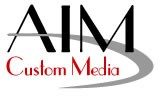What’s included with the WordPress Version 3.0 release?
Whether you need a company website, Content Management System (CMS) or just a blog, WordPress offers endless possibilities. And, with WordPress Version 3.0 the possibilities just got more interesting. But, there are several tricks of the trade when it comes to installing the right widgets, plugins, themes and custom features. Also, there are several maintenance items required to keep any WordPress-based website running smoothly as your needs change and the software evolves.
This past Wednesday, I gave a talk to the Richmond Open Source Meetup Group at the Twin Hickory Library (Glen Allen, VA). During the presentation, we discussed the ins and outs of WordPress as well as a few of the not so common uses of WordPress to help everyone save time, money and a lot of IT aggravation. But, we didn’t spend much time on the upcoming WordPress Version 3.0, which is due to be released this month (May 2010).
So, here’s a brief summary of the top new features that you’ll find in Version 3.0:
WordPress Version 3.0 Features Summary
WordPress Version 3.0 Beta 2 was released May 6, 2010;
expected final release date is this month, May 2010.
- Custom Post Types: Go well beyond “Posts” and “Pages” – Product, Photo, Text, Quote…
- Menu Management: Full control over your site’s navigation menus with drag and drop functionality
- Custom Taxonomies: No longer restricted to “Categories” and “Tags.”
- Twentyten – New default theme with new custom features
- Multi-Site Capabilities – WordPress MU (Multi-User) is now merged with the core WordPress system in version 3.0.
- Author Templates – Ability to create unique templates for each contributing author.
- Improved child theme support; child theme use is “highly encouraged” within the WordPress community (developers read this Child Themes article for details)
WordPress 3.0 Details
Custom Post Types
You are no longer confined to just “Posts” and “Pages.” With WP version 3.0, you can specify additional content types with their own attributes, such as Photo, Text, Product, Quote, etc. This new feature allows more options for controlling the look and feel of your content types. For example, you might want your “Testimonials” page to look quite different than your “Portfolio” page. Each content type can be custom designed to easily add new content in the future.
Menu Management
Full control over your site’s navigation menus thanks to the contribution from Woo Themes and their awesome “Custom Woo Navigation.” The menu management system is included with the core in this release and it allows you to “drag and drop” in a manner similar to the widget management screen. From the control panel, you’ll now be able to re-order menu items and sub-menus as well as create links to external URLs, exclude Pages, Categories, and so on. In addition, you can save the menu as a widget and place it where ever widgets appear in the theme.
Custom Taxonomies
Developers and users are no longer restricted to just “Categories” and “Tags.” This new feature brings WordPress one step closer to a true CMS. Custom taxonomies allow you to create additional pieces of information that can be neatly organized and used over and over. For example, let’s say you’re a restaurant reviewer. You can create a custom taxonomy for service reviews, ambiance, food, and so on.
Twentyten Default Theme
“Twentyten” is the name of the new default theme and it comes with plenty of new custom features. The new theme is the only theme in the WordPress Version 3.0 distribution; the previous Default (Kubrick), and Classic themes are no longer included in the WordPress distribution, but are available in the Theme repository. A few of the custom features now included are custom theme backgrounds, custom header and a drop-down menu system built into the theme.
Multi-Site Capabilities
WordPress MU (WPMU) is now merged with the core WordPress system in version 3.0 and is called Multisite. This feature, which is optional, allows you to manage a network of WordPress sites from one install. Previously, one had to install WordPress MU for one-stop management of multiple sites; no longer necessary given it all now comes in one package.
For a complete list of enhancements, new features and fixes, visit the WordPress Codex here.
